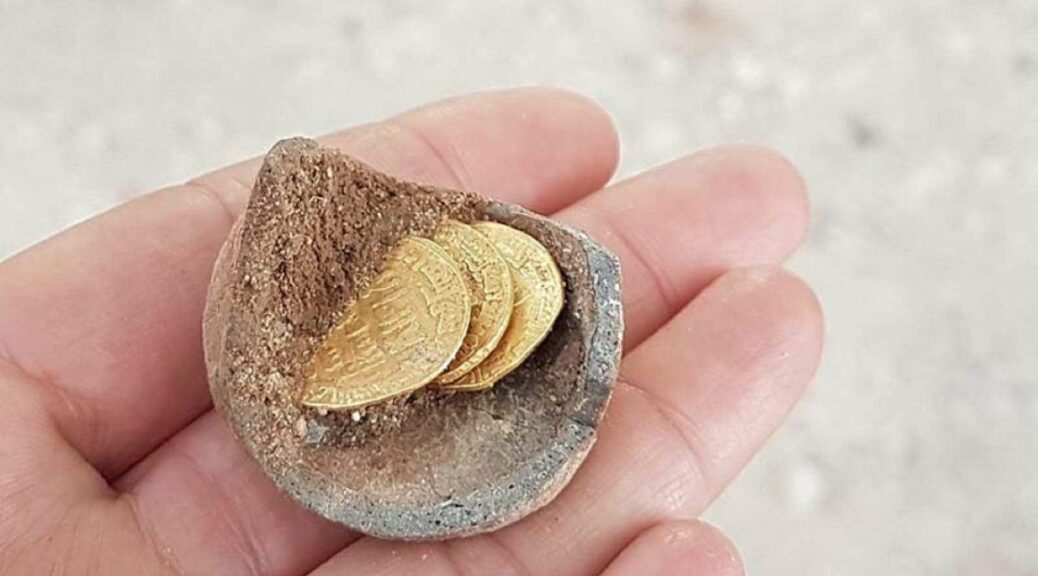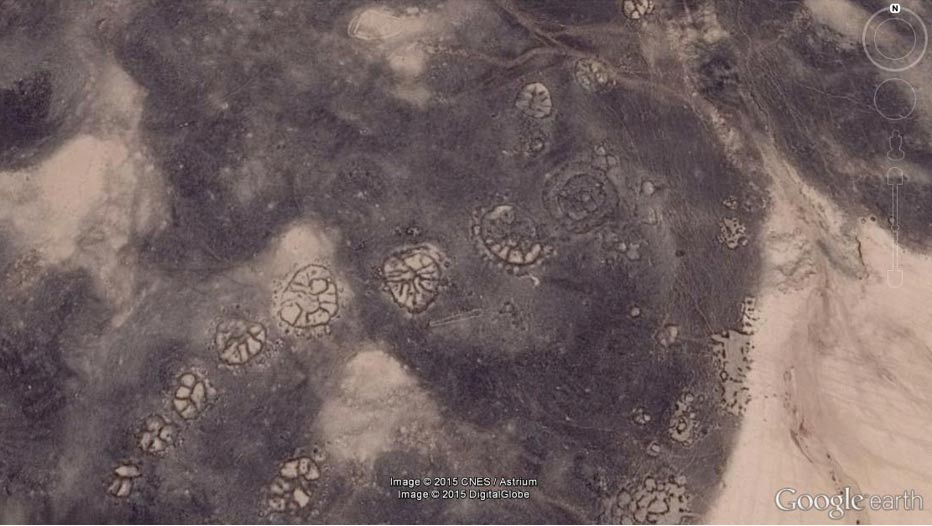Hoard of 1,200-year-old ‘Arabian Nights’ gold coins in an ancient ‘piggy bank’ discovered in Israel on the fourth day of Hanukkah
In the ancient “piggy bank” Israel archeologists have found a small treasure trove of gold coins, which is believed to be the personal savings of a potter that worked in a kiln around 1200 years ago.
They date from the period when the region was ruled by the mighty Abbasid Caliphate and was unearthed at a medieval industrial site. The find was made during the Jewish holiday of Hanukkah when Jews exchange gifts and celebrate.
In Yavne in central Israel archeologists discovered gold coins. A team led by Liat Nadav-Ziv and Dr. Elie Haddad were excavating an area that will eventually be the location of a new residential neighborhood.
On behalf of the Israel Antiquities Authority, they conducted the investigation. A significant number of items were discovered by the team, but nothing unusual until they found a small jug
Nadav-Ziv told The Jerusalem Post that she was “cataloging a large number of artifacts found during the excavations when all of a sudden I heard shouts of joy”.
They had come from veteran archaeologist Marc Molkondov, and he directed them to a spot in the dig. He had unearthed a small cracked jug full of a number of coins. This was clearly an important find.

Dr. Robert Kool, a coin expert from the Israel Antiquities Authority examined the coins. There were all from the 7th-9th centuries AD and date to the early Abbasid period. The Abbasid Caliphate is regarded as an Islamic golden age when the arts, industry, and science flourished.
One of the most important coins found was a gold dinar from the reign of Caliph Harun A-Rashid (786-809 AD). He ruled the Abbasid Caliphate at the zenith of its power and wealth and is a “key figure in the classic collection of stories known as the Arabian Nights also known as One Thousand and One Nights” according to The Jerusalem Post.
In the jug were coins not normally found in Israel. Dr. Kool is quoted by the Jewish Press as saying that there “are gold dinars issued by the Aghlabid dynasty that ruled in North Africa, in the region of modern Tunisia”. This dynasty was largely autonomous but was ultimately under the control of the Abbasids, whose capital was in Baghdad.
The coins were discovered during the major Jewish holiday Chanukah, otherwise known as Hanukkah. During this eight-day festival gifts of coins are given, sometimes chocolate gold coins, are exchanged. Kool is quoted by The Times of Israel as saying that “without a doubt, this is a wonderful Chanukah present for us”.

The excavation at Yavne is not far from a Tel or mound, and a large number of kilns were discovered. The kilns were used in the manufacture of pottery from the late Byzantine to the Early Abbasid period (600 to 900 AD). It appears that the site was once an industrial center and it produced pots, jars, and bowls.
The jug with the treasure trove was unearthed near one of the entrances of the kiln. The Jerusalem Post reports that “it might have been the potter’s ‘piggy-bank’ where he had kept his personal savings”. It is possible that the potter hid the coins at some point and was unable to recover them.
The Yavne site has a long history. Evidence was found that the area was the location of wine production, during the Achaemenid Persian period (5th and 4th centuries BC).
The wine was produced there on a significant scale. Dr. Elie Haddad observed that “the size and number of vats found at the site indicated that wine was produced on a commercial scale, well beyond the local needs of Yavne’s ancient population” reports The Jerusalem Post. It appears that the region exported wine to other areas.

The jug filled with coins is an important find in itself. The discovery helps us to understand more about an important industrial center in the Middle Ages and the region’s role in the international trade network that flourished under the Abbasids. Further excavations at the site are expected to reveal more about Yavneh’s ancient and medieval past.





















